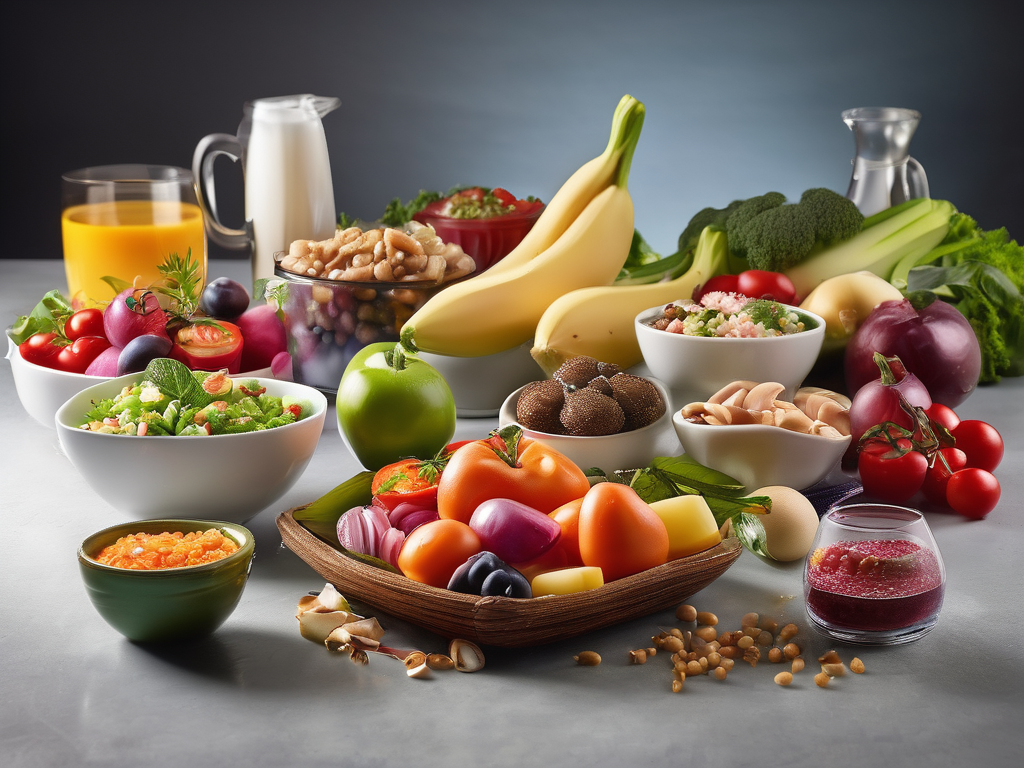
How to Prevent Mold Growth on Opened White Sliced Bread
Get Your Free Food Safety Cheat Sheet
30 most common foods with instant answers. Print it and stick it on your fridge—completely free!
How to Prevent Mold Growth on Opened White Sliced Bread
In most households, white sliced bread is a staple item that can be found in the pantry or on the kitchen counter. However, once you open a loaf of bread, it becomes susceptible to mold growth if not stored properly. Mold on bread not only affects its taste and texture but can also pose health risks if consumed. In this blog post, we will discuss practical tips to prevent mold growth on opened white sliced bread.
Understanding Mold Growth on Bread
Mold is a type of fungus that thrives in warm, damp environments. When bread is exposed to moisture in the air or on the surface, mold spores can quickly colonize and spread. Common types of mold found on bread include Penicillium, Aspergillus, and Rhizopus. These molds can produce mycotoxins, which are harmful compounds that can cause food poisoning and allergic reactions.
Factors that Contribute to Mold Growth on Bread
- Humidity: High humidity levels in the environment can accelerate mold growth on bread.
- Temperature: Warm temperatures provide an ideal breeding ground for mold spores to multiply.
- Air Circulation: Poor air circulation can trap moisture around the bread, promoting mold growth.
- Storage Conditions: Improper storage, such as keeping bread in a humid or warm area, can encourage mold development.
Tips to Prevent Mold Growth on White Sliced Bread
To ensure the longevity and safety of your opened white sliced bread, follow these practical tips to prevent mold growth:
1. Store Bread in a Cool, Dry Place
- Keep bread in a cool, dry area away from direct sunlight and heat sources.
- Avoid storing bread near the stove, dishwasher, or microwave, as these appliances generate heat and moisture that can promote mold growth.
2. Use Airtight Containers or Bags
- Transfer the sliced bread into a resealable plastic bag or airtight container to protect it from moisture and air exposure.
- Squeeze out excess air before sealing the bag to create a tight seal and prevent mold formation.
3. Refrigerate or Freeze Bread
- If you live in a humid climate or plan to consume the bread over an extended period, consider refrigerating or freezing it.
- Wrap the bread tightly in plastic wrap or aluminum foil before placing it in the refrigerator or freezer to maintain freshness and prevent mold growth.
4. Check Bread Regularly for Signs of Mold
- Inspect the bread slices for any visible signs of mold growth, such as a fuzzy texture, discoloration, or musty odor.
- Discard any moldy slices immediately to prevent the spread of mold to the rest of the loaf.
5. Use Bread Clips or Ties
- Secure the opened end of the bread bag with a bread clip or twist tie to prevent air and moisture from entering the packaging.
- Make sure the closure is tight to maintain the freshness of the bread and inhibit mold growth.
Conclusion
By following these simple yet effective tips, you can prevent mold growth on opened white sliced bread and ensure that your bread remains fresh and safe for consumption. Proper storage, regular inspection, and maintaining a dry environment are key factors in preserving the quality of your bread and reducing the risk of mold contamination. Remember, when in doubt, it's always better to err on the side of caution and discard any bread that shows signs of mold. Stay vigilant and proactive in your bread storage practices to enjoy mold-free slices for longer periods.
Authoritative Food Safety References
These agencies and university labs inform every tip and health precaution we publish.
USDA FoodKeeper – Cold Storage Guidelines
Official refrigerator, freezer, and pantry timelines maintained by the U.S. Department of Agriculture.
Visit USDA FoodKeeperFDA Produce Safety Rule & Grower Guidance
Field-to-fridge handling practices that prevent contamination of fruits, vegetables, and leafy greens.
Visit FDA Produce SafetyCDC Foodborne Illness Prevention Hub
Surveillance-backed guidance on pathogens, symptoms, and steps to reduce foodborne illness risk.
Visit CDC Food SafetyUC Davis Postharvest Technology Center
University research detailing optimal storage atmospheres for produce after harvest.
Visit UC Davis PostharvestPenn State Extension – Home Food Preservation & Safety
Peer-reviewed extension bulletins on safe canning, chilling, and reheating practices.
Visit Penn State ExtensionGet Your Free Food Safety Cheat Sheet
30 most common foods with instant answers. Print it and stick it on your fridge—completely free! Want more? Upgrade to the complete guide with 70+ foods.
Scan your food directly and get instant safety info using our AI-powered camera feature.